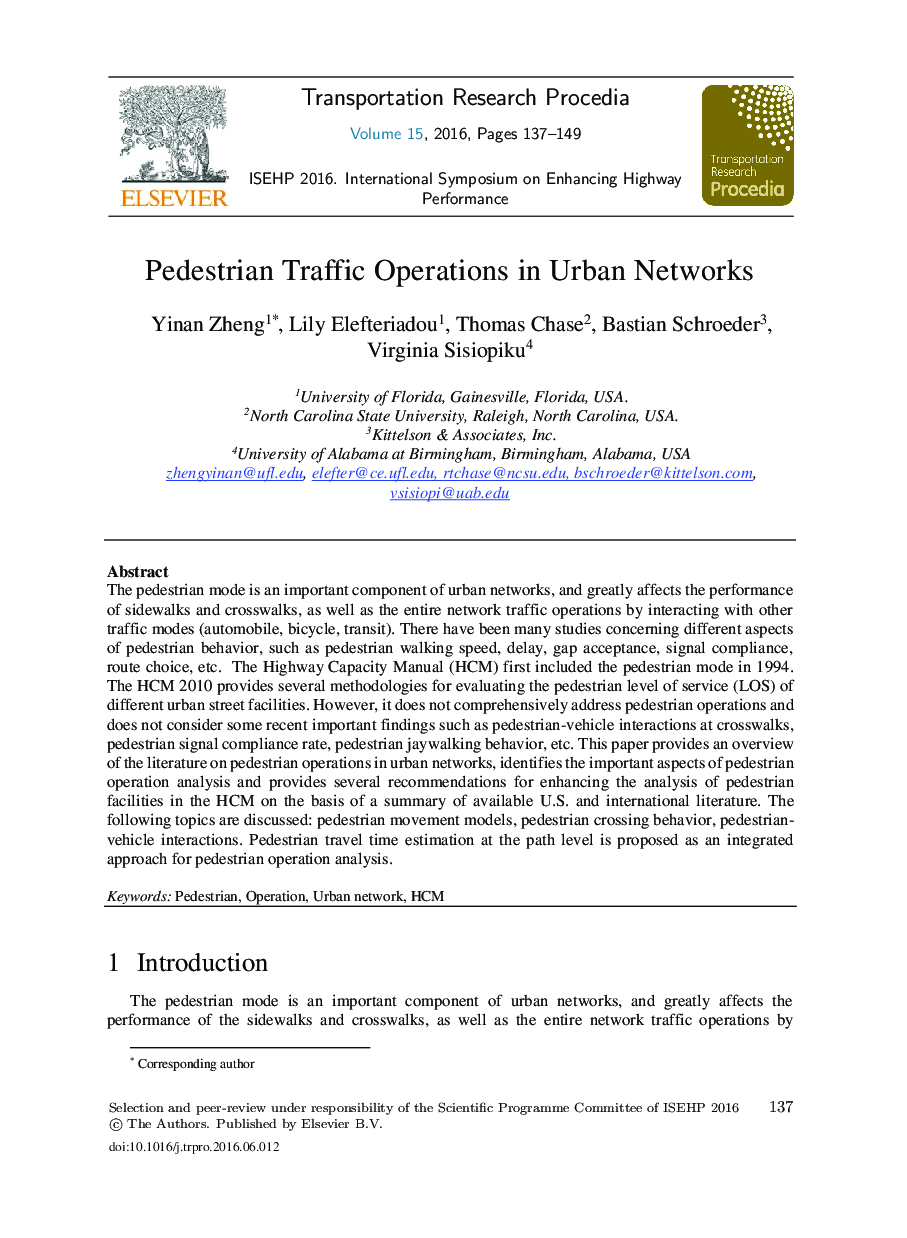| کد مقاله | کد نشریه | سال انتشار | مقاله انگلیسی | نسخه تمام متن |
|---|---|---|---|---|
| 1106103 | 1488280 | 2016 | 13 صفحه PDF | دانلود رایگان |
The pedestrian mode is an important component of urban networks, and greatly affects the performance of the sidewalks and crosswalks, as well as the entire network traffic operations by interacting with other traffic modes (automobile, bicycle, transit). There have been many studies concerning different aspects of pedestrian behaviors, such as pedestrian walking speed, pedestrian delay, gap acceptance, signal compliance, route choice, etc. The Highway Capacity Manual (HCM) included the pedestrian mode in the HCM 1994 (update to the HCM 1985) and the HCM, 2010 provided several basic technical methodologies for evaluating the pedestrian level of service (LOS) of different urban street facilities. However, it does not fully cover the pedestrian operation in a great detail and it is missing some important findings in recent studies. The objective of this paper is to provide an overview of pedestrian operations in urban networks, to identify the important aspects of pedestrian operation analysis and to provide recommendations for pedestrian facilities in the HCM on the basis of a summary of available U.S. and international literature. The following topics will be discussed: pedestrian movement models, pedestrian delay estimation, pedestrian-vehicle interactions, and pedestrian travel time estimation. The major features of pedestrian movement along urban segments are the walking speed and available space, which were well examined in past studies. Pedestrian delay is one important measure of pedestrian operation, and its estimation models at signalized/unsignalized intersections are presented with respect to different scenarios. Modifications to the delay model in the HCM, 2010 are highlighted. Pedestrian-vehicle interactions highly affect traffic operations. Both driver and pedestrian behaviors in such an interaction were observed in the field and were examined quantitatively. Pedestrian jaywalking behavior was also observed and its impact on traffic is discussed. Pedestrian route choice at the strategic level and crossing location selection at the operational level jointly determine the pedestrian moving path and further affect the travel time at path-level. A model for estimating pedestrian travel time in an urban network is developed and presented. Such a model can be used to evaluate the facility performance as well as serve for pedestrian route selection. This paper identifies the important aspects of pedestrian operation analysis in an urban network and provides several recommendations to the HCM.
Journal: Transportation Research Procedia - Volume 15, 2016, Pages 137–149
